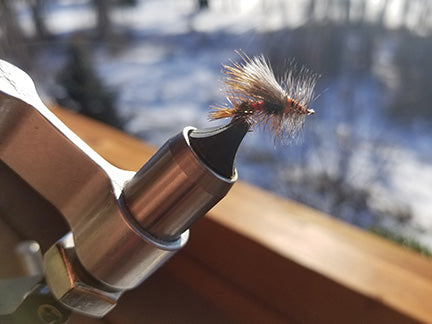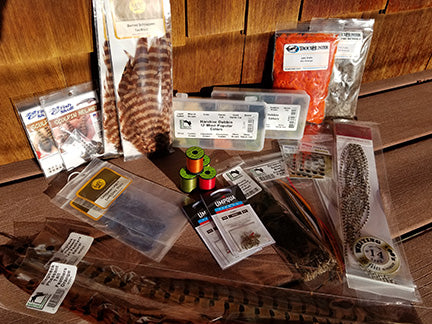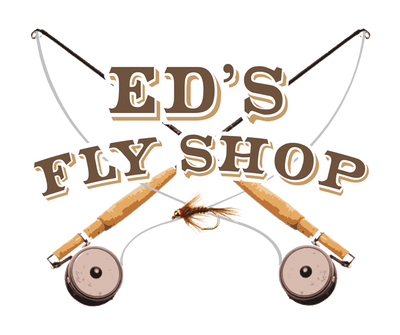Purchasing Fly Tying Materials
Diving into the world of fly tying can be very overwhelming especially when moving into purchasing materials. If you’ve shopped online or walked into your local fly shop the first question you’re probably asking yourself is where to begin? In recent years materials have exploded both on the natural side and in the synthetic world. With everything available to the tier there is a basic way to get started with buying materials and branching out to what fits your style and fishery best. Below are a few suggestions to consider when looking at and buying some of your first materials.
Looking at Your Fishery:
Taking a trip to your local waters with a seine net can be one of the most productive and quickest ways to determine where to start. Fly tying is about imitating the natural food available to the fish, and having stream samples to identify bugs will lead you into pattern choices, and ultimately into a materials list for a specific fly. This is where it should all start anyways, knowing entomology and collecting bugs is what it’s all about. Sitting down at the vise with a good understanding of basic stream entomology or for your specific water is a huge asset and aid in fly tying creativity. By studying the food available in your local waters you will get to know how bugs move and drift, and what behavior attracts fish. Once you have a basic understanding of bug behavior in your fishery it’s time to take it to the vise.
A Simple Approach:
Now that we have identified what type of bugs live within your waters it’s time to pick a few patterns to get started. Picking a pattern to tie leads you to a recipe for a fly and what materials are needed. It’s a very good way to approach fly tying, find a bug, identify it, pick a pattern, get the materials, and tie the fly. Keeping this approach will build your material inventory over time and narrows down the field when shopping. Picture it like going to the grocery store, it’s much easier to shop for a recipe then to go in and just try to throw something together. Choosing what patterns to tie will be a matter of simply matching your stream sample to a fly which best imitates the bug. You can do this by bringing a sample to your local fly shop or by looking online and forming a list of patterns to tie.

Staple Patterns:
If you’re shopping online or in a shop you might come across the term “staple fly”, this term is referring to flies which are fished often and are proven patterns to catch fish. The beauty about some of these patterns is they’ve been around for a long time and teach the very basics of fly tying and how to apply materials which are widely used across the board. There are many good books, videos, and step by step instructions out there for these basic patterns. The material lists called for in these patterns often comprise of the basic and simple materials beginner fly tiers will need. In fly tying there are staple patterns for any trip you take, trout will eat the same food in different river sheds with the exception of a hatch which might be specific to a particular drainage. When stocking your fly box with staple patterns it’s also a good idea to research before heading to a new fishery. If there is a particular hatch occurring on the river, and you don’t have the bug for it you could be in for a long trip. Adding a new fly to your box for a particular piece of water broadens your inventory and education into bugs as well. What works well in one river might work in another, and over time you will start to figure out what works pretty much everywhere, and what you need specifically for a particular hatch.

Gathering Materials:
So far we have discussed a simple approach to fly tying which will hopefully give you a sense of direction when you start to acquire your first materials.
1. Collect a stream sample
2. Identify the bugs in your waters or waters you are traveling to fish
3. Pick patterns which best imitate your sample, if traveling to new water gather information about the food and patterns to tie
4. Gather Materials
Now that you have picked a pattern to tie it’s time to shop! Everything from the hook, bead, and dressing of the fly should be tied with quality materials. If possible compare brands and see the difference in a low grade feather versus a high grade feather. Or a high grade hook versus a value hook, whatever it may be the differences can be subtle but very noticeable on the vise and river. When shopping reach out and ask about the materials you are buying, especially when it comes to fur and feathers. Talking to someone and having handpicked materials to start will give you an edge on the quality of flies you will be turning out. This bit of information is just the start into a very addictive passion and hopefully narrows down your adventure and investment into fly tying. In my mind there is nothing better than catching a fish on a fly you’ve tied yourself, and soon you will discover that too.


